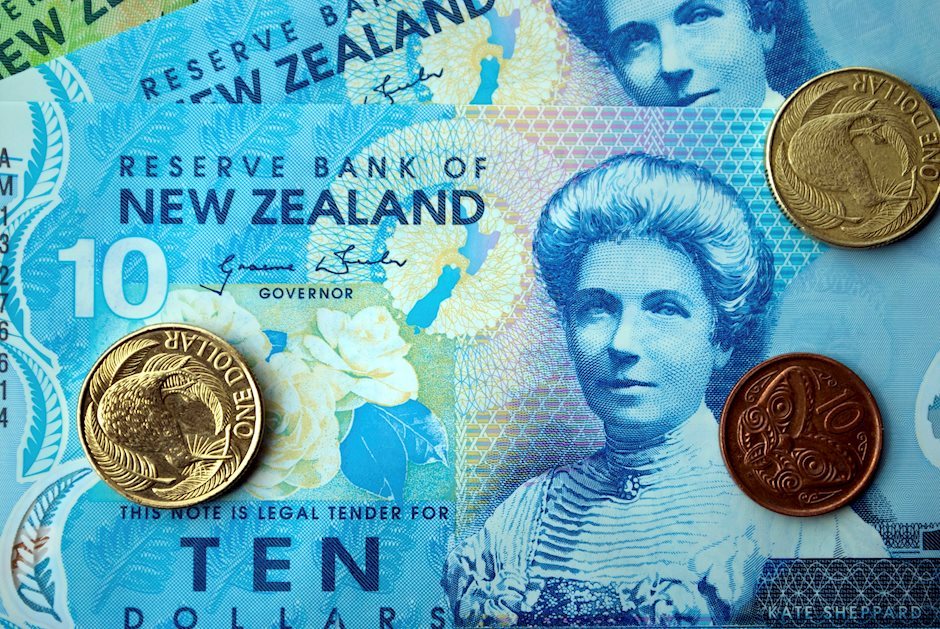New Zealand Dollar rebounds in the afternoon against the US Dollar
- The New Zealand Dollar continues rising on Wednesday as positive news from China helps boost commodity prices.
- The Kiwi had already rebounded after lower-than-expected US CPI data led to hopes of an end to the global rate-hiking cycle.
- NZD/USD breaks to fresh highs and targets the October highs at 0.6055.

The New Zealand Dollar (NZD) on Wednesday has held onto much of its gains against the US Dollar (USD) from the previous day, helped by positive growth stories from China, its largest trading partner. The NZD/USD pair dropped off mid-morning in the US session, back down below 0.6000, but has since rebounded in the afternoon to the 0.6022 handle.
Daily digest market movers: New Zealand Dollar: China in the spotlight
- The New Zealand Dollar rallies after data from China lifts the outlook for trade and reverses the recent spate of lackluster readings.
- A support package from the Chinese government, amounting to an injection of 1 trillion Yuan in low-cost financing for the beleaguered property sector, also helps allay fears of a credit crunch, according to a report originally from Bloomberg News.
- Data out early Wednesday morning showed Chinese Retail Sales rose 7.6% in October YoY, squarely beating estimates of 7.0% and 5.5% previously, according to the National Bureau of Statistics of China.
- Industrial Production also beat expectations, coming out at 4.6% YoY in October versus consensus estimates of 4.5% and 4.5% previously.
- Fixed Asset Investment came in at a lower 2.9% than the 3.1% forecast (YoY YTD in October) and the 3.1% previous.
- The strong Chinese data, coupled with lower inflation data from the US, UK and several European countries, lessened global growth fears and led to a surge in risk appetite, with stock indices across the globe seeing marked rallies.
- New Zealand is a major exporter of dairy products to China, so the positive newsflow helped support the prospects for the economy and demand for the New Zealand Dollar.
- The US Dollar has fallen after inflation data suggested a greater chance of no further increases to interest rates. This makes the US a less attractive place for global investors to park their capital, reducing demand for the USD.
New Zealand Dollar technical analysis: NZD/USD continues rallying
NZD/USD – the number of US Dollars one New Zealand Dollar can buy – extends its rally above the important November 3 high at 0.6001 and sets its sights on the 0.6055 October high.
New Zealand Dollar vs US Dollar: Daily Chart
The break above 0.6001 confirms the short-term bullish bias again, with the next target at 0.6055.
The pair has now broken cleanly above the 100-day Simple Moving Average (SMA) and a further push above the 0.6055 October high would change the outlook in the medium term, indicating the possibility of the birth of a new uptrend. Such a move would then target the 200-day SMA at around 0.6100.
As things stand, the medium and long-term trends are both still bearish, however, suggesting the potential for more downside remains strong.
RBNZ FAQs
What is the Reserve Bank of New Zealand?
The Reserve Bank of New Zealand (RBNZ) is the country’s central bank. Its economic objectives are achieving and maintaining price stability – achieved when inflation, measured by the Consumer Price Index (CPI), falls within the band of between 1% and 3% – and supporting maximum sustainable employment.
How does the Reserve Bank of New Zealand’s monetary policy influence the New Zealand Dollar?
The Reserve Bank of New Zealand’s (RBNZ) Monetary Policy Committee (MPC) decides the appropriate level of the Official Cash Rate (OCR) according to its objectives. When inflation is above target, the bank will attempt to tame it by raising its key OCR, making it more expensive for households and businesses to borrow money and thus cooling the economy. Higher interest rates are generally positive for the New Zealand Dollar (NZD) as they lead to higher yields, making the country a more attractive place for investors. On the contrary, lower interest rates tend to weaken NZD.
Why does the Reserve Bank of New Zealand care about employment?
Employment is important for the Reserve Bank of New Zealand (RBNZ) because a tight labor market can fuel inflation. The RBNZ’s goal of “maximum sustainable employment” is defined as the highest use of labor resources that can be sustained over time without creating an acceleration in inflation. “When employment is at its maximum sustainable level, there will be low and stable inflation. However, if employment is above the maximum sustainable level for too long, it will eventually cause prices to rise more and more quickly, requiring the MPC to raise interest rates to keep inflation under control,” the bank says.
What is Quantitative Easing (QE)?
In extreme situations, the Reserve Bank of New Zealand (RBNZ) can enact a monetary policy tool called Quantitative Easing. QE is the process by which the RBNZ prints local currency and uses it to buy assets – usually government or corporate bonds – from banks and other financial institutions with the aim to increase the domestic money supply and spur economic activity. QE usually results in a weaker New Zealand Dollar (NZD). QE is a last resort when simply lowering interest rates is unlikely to achieve the objectives of the central bank. The RBNZ used it during the Covid-19 pandemic.
Author

Joaquin Monfort
FXStreet
Joaquin Monfort is a financial writer and analyst with over 10 years experience writing about financial markets and alt data. He holds a degree in Anthropology from London University and a Diploma in Technical analysis.
-638356476496180290.png&w=1536&q=95)

















